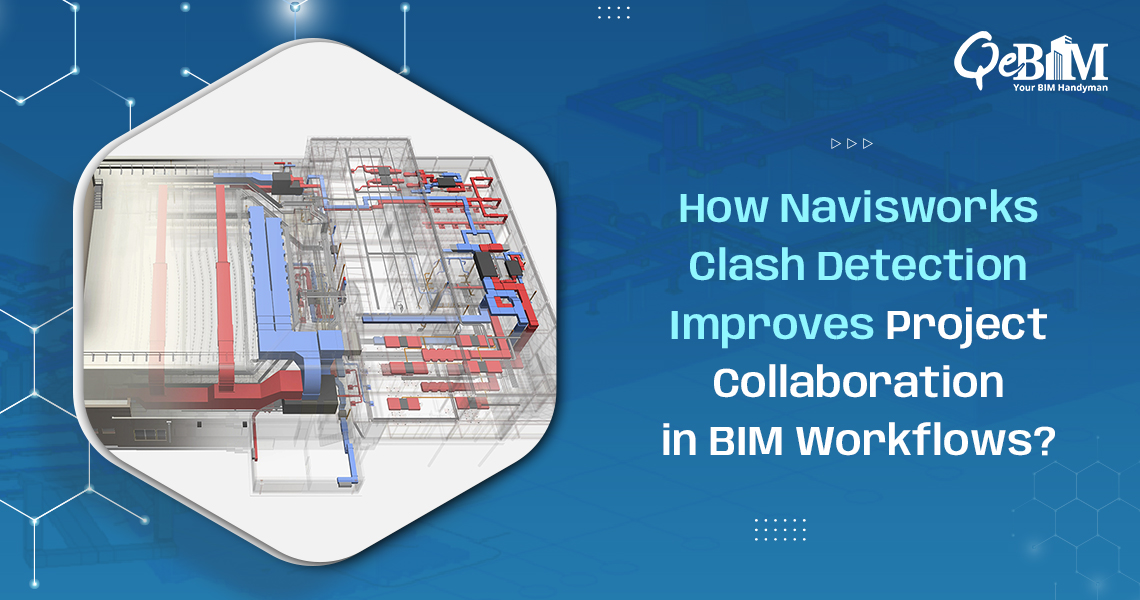In the world of architecture, engineering, and construction, BIM has emerged as a transformative technology. It streamlines the processes, enhances the collaboration, and improves the project/construction outcomes. And, within the domain of BIM, OpenBIM stands out as an approach that prioritizes interoperability and open standards. However, despite its numerous benefits, OpenBIM is often enveloped in myths and misconceptions that impede its broad acceptance among various BIM Company.
The below article will uncover some of the most common myths surrounding OpenBIM.
OpenBIM and 7 Common Myths Associated with It.
Myth 1: OpenBIM is a Specific Software
One prevalent misconception about OpenBIM is that it refers to a particular software or proprietary solution.
Reality: OpenBIM is an approach based on the open standards that promotes collaboration and interoperability among various software platforms. It encourages the use of standardized file formats (such as IFC) to ensure the seamless communication and data exchange throughout the project lifecycle.
Myth 2: OpenBIM is Only for Large Projects
Another myth suggests that OpenBIM is suitable only for large-scale projects involving extensive collaboration among multiple stakeholders.
Reality: While OpenBIM certainly excels in large scale scenarios but its principles can be applied effectively to all the projects irrespective of their sizes. Whether it’s a small residential renovation or a massive infrastructure development, OpenBIM fosters communication, reduces errors, and improves efficiency at every scale.
Myth 3: OpenBIM Requires Significant Training
Some individuals believe that adopting OpenBIM necessitates extensive training and relearning of workflows, hence, deterring them from making the switch.
Reality: Though there may be a learning curve binded with mastering new tools and processes. However, the principles of OpenBIM are intuitive and align closely with the existing BIM methodologies. Moreover, many training resources and support networks are available to assist professionals in transitioning to OpenBIM seamlessly.
Myth 4: OpenBIM Sacrifices Data Security
Security concerns about the data security often arise when discussing open standards like OpenBIM.
Reality: Adhering to the open standards does not fundamentally compromise data security. In fact, OpenBIM promotes the transparency and accountability by allowing the stakeholders to access, review, and validate project data in a controlled environment. Properly implemented OpenBIM enhances the data security by establishing clear protocols for data exchange and sharing while safeguarding sensitive information.
Myth 5: OpenBIM is Costly
There’s a misconception that adopting OpenBIM incurs significant upfront costs, making it unfeasible for smaller firms or the projects with the limited budgets.
Reality: While there may be initial expenses associated with the software licenses, training, and infrastructure. But the long-term benefits of OpenBIM far outweigh these costs. By improving collaboration, reducing errors, and enhancing project efficiency, OpenBIM ultimately leads to cost savings and better returns on investment over the project lifecycle.
Myth 6: OpenBIM is Complex
Some perceive OpenBIM as overly complex, requiring advanced technical expertise to implement and manage effectively.
Reality: It is true that BIM processes can be intricate however, OpenBIM is designed to simplify rather than complicate workflows. OpenBIM frameworks provide clear guidelines and standards for data exchange, making collaboration more straightforward and reducing the risk of misunderstandings. Moreover, the evolving need of OpenBIM tools and resources includes user-friendly interfaces and intuitive features that cater to the professionals at all skill levels.
Myth 7: OpenBIM is a Compulsion for All Projects
Reality: While OpenBIM offers numerous benefits, it’s not a mandatory requirement for every project in the AEC industry. While some jurisdictions or clients may mandate the use of BIM or specific open standards for certain projects, the adoption of OpenBIM remains a choice for individual organizations and project teams. However, leveraging OpenBIM can confer competitive advantages, positioning firms as leaders in collaborative design and construction practices. Ultimately, the decision to adopt OpenBIM is completely based on the specific needs, goals, and requirements of each project and organization.
Conclusion:
OpenBIM represents a paradigm shift in the AEC industry, offering a collaborative and interoperable approach to BIM Modelling Services. By dispelling the common myths and misconceptions, AEC professionals can embrace the OpenBIM with confidence, harnessing its potential to drive efficiency, improve project outcomes, and shape the future of construction practices. Leveraging OpenBIM isn’t just about adopting new tools; it’s about embracing a philosophy of openness, collaboration, and innovation that benefits everyone involved in the built environment.





